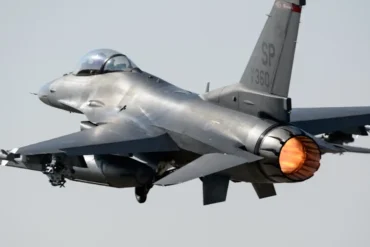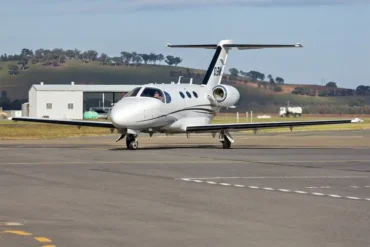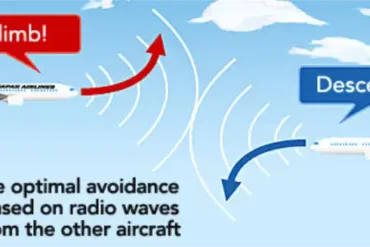Air traffic control involves monitoring aircraft, including planes and helicopters, to maintain safe distances between each aircraft. Professionals in the air traffic control industry oversee flight plans and regularly communicate with pilots regarding takeoff and landing. If you’re interested in direct interaction with aircraft personnel, consider a career as an air traffic controller. In this article, we delve into the responsibilities of air traffic controllers, explore salary considerations, discuss job requirements, and provide steps for becoming one.
Duties of an air traffic controller:
Air traffic controllers play a crucial role in managing aircraft movement. Their tasks include:
- Monitoring and controlling aircraft movement: Using computers and monitors, air traffic controllers observe and track aircraft within their designated airspace. Tower controllers specialize in monitoring ground-based aircraft, while approach and departure controllers manage takeoff and landing. En route controllers direct aircraft movement between airports’ airspace.
- Providing essential information to pilots: Air traffic controllers relay critical data to pilots, including details about severe weather along their flight path, runway conditions, and other vital safety information.
- Instructing pilots: These specialists guide airline pilots on when and where to operate their aircraft. Pilots typically receive clearance for landing or departure from air traffic controllers.
- Overseeing aircraft control transfers: Controllers monitor aircraft within specific airspace limits. When aircraft enter or exit these boundaries, controllers verify the transfer of control.
- Follow emergency protocol: In the event of emergencies, air traffic controllers adhere to established procedures. They promptly relay relevant details to airport staff and other stakeholders or officials within specified time frames.
Average salary for air traffic controllers
Air traffic controllers earn an average annual salary of $129,750. Many work full-time hours, covering shifts during mornings, evenings, or overnight periods. The specific salary varies based on experience level and geographical location. As employees of the Federal Aviation Administration (FAA), air traffic controllers receive comprehensive benefits in addition to their annual pay. For more insights, explore: How Much Do Air Traffic Controllers Make?
Air traffic controller requirements
Becoming an air traffic controller involves a specific blend of education, work experience, training, and soft skills. The FAA sets specific qualifications, including:
Education
Candidates aspiring to be air traffic controllers must meet the following educational requirements or their equivalents:
- Air Traffic Collegiate Training Initiative (AT-CTI) degree: Many candidates pursue associate or bachelor’s degrees through FAA-approved AT-CTI programs. These specialized degrees cover essential topics such as airspace charts, clearances, weather considerations, and FAA regulations.
- Work experience: The FAA also considers candidates with three years of general work experience, provided they demonstrate increasing levels of responsibility.
- Combination of post-secondary education and work experience: Alternatively, candidates can combine work experience and college education to meet the three-year requirement.
Training
The Federal Aviation Administration (FAA) mandates that air traffic controllers participate in an FAA Academy training program, lasting up to three months at the agency’s Oklahoma City facility. Over their careers, many controllers complete multiple training programs. Transitioning to a new facility or assuming supervisory roles typically necessitates additional training. For further insights, explore: What Is Off-the-Job Training? Methods and Benefits
Certifications
Numerous certifications are available for aviation industry roles. In addition to meeting educational and training prerequisites, aspiring air traffic controllers can pursue the following certifications:
- Pre-employment test: This assessment evaluates candidates’ suitability for becoming air traffic controllers. Administered by the FAA, these tests gauge traits such as memory, verbal communication, and spatial reasoning.
- Air Traffic Controller Specialists skills assessment: This test validates candidates’ job-related skills. A passing score exceeds 70%.
- Air Traffic Control Tower Operator certificate: Essential for assuming supervisory positions and advancing careers, this FAA credential can be earned after graduating from the FAA Academy and fulfilling essential requirements while working as an entry-level developmental controller.
Skills
Air traffic controllers regularly employ the following skills:
- Attention to detail: Monitoring various aircraft and airport activities demands keen attention to detail. These specialists swiftly identify potential issues and respond promptly.
- Communication: Effective communication is crucial for conveying information to pilots. Controllers articulate and listen, providing concise and critical details via communication equipment.
- Decision-making: Air traffic controllers swiftly make informed decisions regarding safe aircraft movement. They assess situations, weigh risks, and propose solutions.
- Focus: Despite numerous distractions, controllers maintain prolonged concentration. Given that errors can impact passengers’ and pilots’ safety, unwavering focus is crucial.
- Math: Proficient math skills are essential for calculating aircraft distances, speeds, and times efficiently. Controllers must perform basic calculations accurately and swiftly.
- Problem solving: Air traffic controllers independently resolve issues that frequently arise with aircraft. A solid understanding of common aviation challenges and excellent problem-solving skills enable effective solutions.
Air traffic controller work environment
Control towers typically feature large windows for observing aircraft and runways, while routing centers have open-layout office spaces. In both settings, controllers rely on multiple screens to receive and process information. They communicate verbally with pilots and aircraft operators using headsets. As air traffic control facilities operate 24 hours a day, controllers often work over 40 hours per week. Federal regulations mandate 10-hour shifts with a minimum of nine-hour breaks between shifts. For additional insights, explore: List of 18 Airport Jobs for Every Experience Level
How to become an air traffic controller
Follow these steps to pursue an air traffic controller career:
- Meet the basic requirements: Ensure you meet the essential criteria, including age, citizenship, and education. If you fulfill these requirements, proceed to the next steps.
- Get a degree or work experience: The FAA accepts candidates with either four years of post-secondary education or an associate’s or bachelor’s degree from an AT-CTI program. Alternatively, you can accumulate at least three years of work experience demonstrating increasing responsibility.
- Create a resume and apply to the FAA Academy: Once you meet the preliminary requirements, craft a comprehensive resume highlighting your education, work experience, and relevant skills. Use this resume to apply for a position with the FAA.
- Pass the essential checks: To advance to the next hiring stage, candidates undergo a medical evaluation, a background check, and successfully complete the FAA pre-employment test.
- Complete the ATSA exam: Schedule the Air Traffic Selection and Training Aptitude (ATSA) exam, which typically takes half a day. A passing score qualifies you for enrollment in the FAA Academy.
- Take an FAA Academy training course: Upon being hired by the FAA, enter the FAA Academy and complete the prescribed training course. Note that candidates must begin this course before turning 31 years old. Upon graduation, you can commence work as an entry-level developmental controller.
- Earn a certificate: After gaining experience as a developmental controller and fulfilling all FAA requirements, you can obtain an Air Traffic Control Tower Operator Certificate.
Air traffic controller job description example
Here’s a sample job description for an entry-level air traffic control position:
The Air Traffic Control Specialist (ATCS) controls air traffic on and within the vicinity of the airport according to established procedures and policies to prevent collisions and minimize delays arising from traffic congestion. The incumbent is responsible for the safe, orderly and expeditious movement of air traffic through the nation’s airspace
Populus Recruiting


















